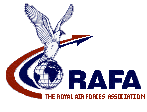|
The Royal Air Force (RAF) is the aerial warfare service branch of the British Armed Forces. Formed on 1 April
1918, it is the oldest independent air force in the world. The RAF has taken a significant role in British military history, playing a large part in the Second World War and in more recent conflicts.
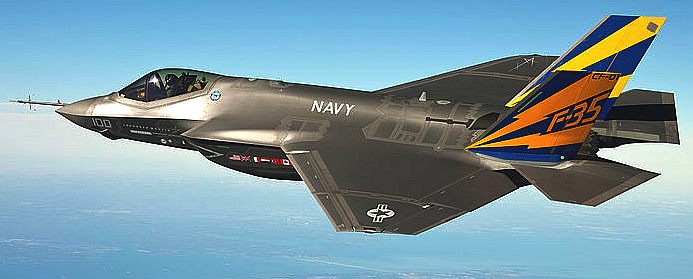
Navy
Lightning F35 fighter plane test flight
The RAF is one of the most capable and technologically sophisticated air forces in the world. As of January
2012 it operated 827 aircraft, making it the largest air force of a European Union country and the second largest in NATO (after the USAF). Most of the RAF's aircraft and personnel are based in the UK, with many others serving on operations (principally Afghanistan and the Middle East) or at long-established overseas bases (Ascension Island, Cyprus, Gibraltar, and the Falkland Islands).
The RAF's mission is to support the objectives of the British Ministry of Defence (MoD), which are to "provide the capabilities needed: to ensure the security and defence of the United Kingdom and overseas territories, including against terrorism; to support the Government’s foreign policy objectives particularly in promoting international peace and
security."
The
Battle of Britain
The RAF's mission statement is:
“ ... [to provide] An agile, adaptable and capable Air Force that, person for person, is second to none, and that makes a decisive air power contribution in support of the UK Defence
Mission. ”
The mission statement is supported by the RAF's definition of air power, which guides its strategy. Air power is defined as: "The ability to project military force in air or space by or from a platform or missile operating above the surface of the earth. Air platforms are defined as any aircraft, helicopter or unmanned air
vehicle."
Although the RAF is the principal British air power arm, the Royal Navy's Fleet Air Arm and the British Army's Army Air Corps also deliver air power which is integrated into the maritime, littoral and land environments.
On
this page you will find links to the aircraft and weapons currently
in use by the RAF. There is a table of the current operational
strength of the RAF. The equipment link provides explanations of the support equipment and radars that form such
organisations as the United Kingdom Air Surveillance and Control
System. We hope you find this page helpful.
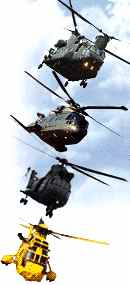
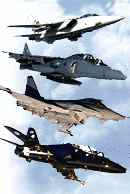
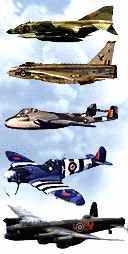
Aircraft of the
Royal Airforce
Origins
While the British were not the first to make use of heavier-than-air military aircraft, the RAF is the world's oldest independent air force: that is, the first air force to become independent of army or navy
control. It was founded on 1 April 1918, with headquarters located in the former Hotel Cecil, during the First World War, by the amalgamation of the Royal Flying Corps (RFC) and the Royal Naval Air Service (RNAS). After the war, the service was drastically cut and its inter-war years were relatively quiet, with the RAF taking responsibility for the control of Iraq and executing a number of minor actions in other parts of the British Empire. Naval aviation in the form of the RAF's Fleet Air Arm was returned to Admiralty control on 24 May 1939.
The RAF developed its doctrine of Strategic bombing which led to the construction of long-range bombers and became the basic philosophy in the Second World
War.
The
Supermarine Spitfire was developed from the Schneider Trophy
world record breaking seaplanes designed by Reginald
Mitchell (Coupe d'Aviation Maritime Jacques Schneider)
Second World War
The RAF underwent rapid expansion prior to and during the Second World War. Under the British Commonwealth Air Training Plan of December 1939, the air forces of British Commonwealth countries trained and formed "Article XV squadrons" for service with RAF formations. Many individual personnel from these countries, and exiles from occupied Europe, also served with RAF squadrons.
In the Battle of Britain, in the late summer of 1940, the RAF (supplemented by 2 Fleet Air Arm Squadrons, Polish, Czechoslovakian and other multinational pilots and ground personnel) defended the skies over Britain against the German Luftwaffe, helping foil Hitler's plans for an invasion of the United Kingdom, and prompting Prime Minister Winston Churchill to say in the House of Commons on 20 August, "Never in the field of human conflict was so much owed by so many to so
few".
The largest RAF effort during the war was the strategic bombing campaign against Germany by Bomber Command. While RAF bombing of Germany began almost immediately upon the outbreak of war, under the leadership of Air Chief Marshal Harris, these attacks became increasingly devastating from 1942 onward as new technology and greater numbers of superior aircraft became available. The RAF adopted night-time area bombing on German cities such as Hamburg and Dresden, and developed precision bombing techniques for specific operations, such as the "Dambusters" raid by No. 617
Squadron, or the Amiens prison raid known as Operation Jericho.
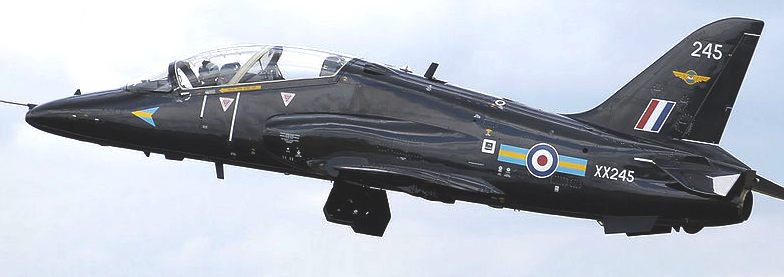
A BAE Hawk
trainer, as used by the Red Arrows
Post-war
The Royal Air Force was involved in the 1948 Berlin Airlift, codenamed Operation Plainfire. Between 26 June and the lifting of the Russian blockade of the city on 2 May, the RAF provided 17% of the total supplies delivered during the event, using Avro Yorks, Douglas Dakotas flying to Gatow Airport and Short Sunderlands flying to Lake
Havel.
1960–1970
The Handley Page Victor bomber was a strategic bomber of the RAF's V bomber force used to carry both conventional and nuclear
bombs. The British Government elected on 16 February 1960 to share the country's nuclear deterrent between the RAF and submarines of the Royal Navy, deciding on 13 April to concentrate solely on the air force's V bomber fleet. These were initially armed with nuclear gravity bombs, later being equipped with the Blue Steel missile. Following the development of the UGM-27 Polaris, the strategic nuclear deterrent passed to the navy's submarines on 30 June
1969.
Later years
After the Cold War, the RAF was involved in several large scale operations, including the Gulf War, the Kosovo War, operations in Afghanistan, the 2003 invasion of Iraq and the subsequent war.
The RAF celebrated the 90th anniversary of its formation on 1 April 2008 with a flypast of the Red Arrows and four Typhoons over many RAF Stations and Central
London.
As part of the 2010 Strategic Defence and Security Review, the BAE Systems Nimrod MRA4 aircraft was cancelled due to over spending and missing
deadlines. It was due to have replaced the Nimrod MR2 from late 2011, which fulfilled the Anti-Submarine Warfare and Anti-Surface Unit Warfare roles. It also saw use in a Search and Rescue role, where its long range and communications facilities allowed it to co-ordinate rescues by acting as a link between rescue helicopters, ships and shore bases. It could also drop pods containing life rafts and survival supplies to people in the sea. After the MR2's withdrawal, the search and rescue role was adopted by the C-130 Hercules force, and the Royal Navy took full responsibility for anti-submarine
warfare.
Structure
Royal Air Force
- Components
Royal Air Force
Royal Auxiliary Air Force
RAF Regiment
RAF Volunteer Reserve
RAF Police
History
History · Timeline
Aircraft
List of RAF aircraft
Structure
Air Command
No. 1 Group
No. 2 Group
Joint Force Air Component
Headquarters (JFACHQ)
No. 22 Group
Stations
Personnel
Officer ranks
Other ranks
The professional head of the RAF is the Chief of the Air Staff (CAS), Air Chief Marshal Sir Stephen Dalton. The CAS heads the Air Force Board, which is a committee of the Defence Council. The Air Force Board is the management board of the RAF and consists of the Commander-in-Chief of Air Command (Air Chief Marshal Sir Simon Bryant), together with several other high ranking officers. The CAS also has a deputy known as the Assistant Chief of the Air Staff (ACAS); this post is held by Air Vice-Marshal B M
North.
Prince
William landing Sea King helicopter in Canada
Command
Authority is delegated from the Air Force Board to the RAF's command. While there were once individual commands responsible for bombers, fighters, training, etc., now only the Air Command exists, headquartered at RAF High
Wycombe.
Groups
Groups are the subdivisions of operational commands; these are responsible for certain types of operation or for operations in limited geographical areas. As from 1 April 2007, three groups exist:
1 Group (the Air Combat Group): controls the RAF's combat fast jet aircraft and the following stations: RAF Odiham, RAF Benson, RAF Leeming, RAF Coningsby, RAF Leuchars, RAF Wittering, RAF Cottesmore, RAF Marham and RAF Lossiemouth in the UK in addition to RAF Unit Goose Bay in Canada, which is used extensively as an operational training base. The RAF's electronic warfare tactics range at RAF Spadeadam in Cumbria, is also within its sphere of responsibility.
2 Group (the Air Combat Support Group): controls the strategic and tactical air transport aircraft, the RAF Regiment, the RAF's air-to-air refuelling aircraft as well as Intelligence, Surveillance, Target Acquisition, and Reconnaissance (ISTAR) and search and rescue assets.
22 Group: responsible for recruiting, personnel management and training.
In addition, No. 83 Group RAF, under the command of the Permanent Joint Headquarters, is active in the Middle East, supporting operations over Iraq and Afghanistan.
Stations
Phased Array Ballistic Missile Early Warning System at RAF
Fylingdales
An RAF station is ordinarily subordinate to a group and it is administratively sub-divided into wings. Since the mid to late 1930s RAF stations have controlled a number of flying squadrons or other units at one location by means of a station headquarters.
Wings
A wing is either an operational sub-division of a group or an administrative sub-division of an RAF station.
Independent Wings are a grouping of two or more squadrons, either flying squadrons or ground support squadrons. In former times, numbered flying wings have existed, but recently they have been created only when required. For example during Operation Telic, Tornado GR4 wings were formed to operate from Ali Al Salem and Al Udeid air bases and the Tornado F3 equipped Leuchars Fighter Wing at Prince Sultan Air Base; each of these were made up of aircraft and crews from several squadrons.
On 31 March 2006, the RAF formed nine Expeditionary Air Wings (EAWs) in order to support operations. They were established at the nine main operating bases; RAF Coningsby, RAF Cottesmore, RAF Kinloss, RAF Leeming, RAF Leuchars, RAF Lossiemouth, RAF Lyneham, RAF Marham and RAF Waddington numbered Nos 121, 122, 325, 135, 125, 140, 38, 138 and 34 EAWs respectively. These units are commanded by a Group Captain who is also the parent unit's Station Commander. The EAW comprises the non-formed unit elements of the station that are required to support a deployed operating base, i.e. the command and control, logistics and administration functions amongst others. They are designed to be flexible and quickly adaptable for differing operations. They are independent of flying squadrons, Air Combat Support Units (ACSU) and Air Combat Service Support Units (ACSSU) who are attached to the EAW depending on the task it has been
assigned.
A wing is also an administrative sub-division of an RAF station. Historically, for a flying station these were normally Operations Wing, Engineering Wing and Administration Wing and each wing was commanded by an officer of wing commander rank. Early in the 21st century, the model changed, with Engineering Wing typically being split into Forward Support Wing and Depth Support Wing, while Administration Wing was
re-designated Base Support Wing.
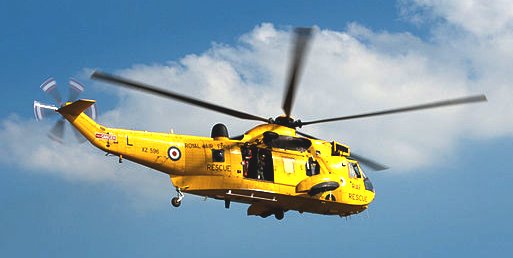
A
Sea King search and rescue helicopter as used by the RAF
Squadrons
A flying squadron is an aircraft unit which carries out the primary tasks of the RAF. RAF squadrons are somewhat analogous to the regiments of the British Army in that they have histories and traditions going back to their formation, regardless of where they are based, which aircraft they are operating, etc. They can be awarded standards and battle honours for meritorious service. Whilst every squadron is different, most flying squadrons are commanded by a wing commander and, for a fast-jet squadron, have an establishment of around 100 personnel and 12 aircraft.
The term squadron can be used to refer to a sub-unit of an administrative wing or small RAF station, e.g. Air Traffic Control Squadron, Personnel Management Squadron etc. There are also Ground Support Squadrons, e.g. No 2 (Mechanical Transport) Squadron which is located at RAF Wittering. Administrative squadrons are normally commanded by a squadron leader.
Flights
A flight is a sub-division of a squadron. Flying squadrons are often divided into two flights, e.g. "A" and "B", each under the command of a squadron leader. Administrative squadrons on a station are also divided into flights and these flights are commanded by a junior officer, often a flight lieutenant.
Because of their small size, there are several flying units formed as flights rather than squadrons. For example No. 1435 Flight is based at RAF Mount Pleasant in the Falkland Islands, maintaining air defence cover with four Eurofighter Typhoon aircraft.
Personnel
At its height (1944) during the Second World War, more than 1,100,000 personnel were serving. The longest-lived founding member of the RAF was Henry Allingham, who died on 18 July 2009 aged
113. As of 1 November 2011, the Royal Air Force has a total manpower strength of 41,330
personnel and 1,500 Royal Auxiliary Air Force (Volunteer Reserve) personnel. In addition there were 33,400 Regular Reserves of the Royal Air
Force.
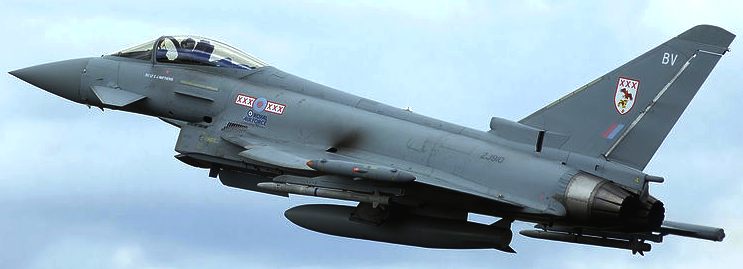
Typhoon
Eurofighter
Flying hours
Figures from 2010 showed that Royal Air Force pilots achieve a relatively high number of flying hours per year when compared to other major NATO allies such as France and Germany. RAF fast jet pilots achieve 210 flying hours per year, while RAF transport and aerial refueling pilots achieve 290 flying hours per year. In addition, RAF pilots on transport and support helicopters achieve 240 flying hours per
year. (French and German air force pilots achieved only 180 and 150 flying hours across their fleets
respectively).
RAF officer ranks
Officers hold a commission from the Sovereign, which provides the legal authority for them to issue orders to subordinates. The commission of a regular officer is granted after successfully completing the 30-week-long Initial Officer Training course at the RAF College, Cranwell, Lincolnshire. Other officers also train at RAF Cranwell, but on different courses, such as those for professionally qualified officers.
The titles and insignia of RAF officers were chiefly derived from those used by the Royal Navy, specifically the Royal Naval Air Service (RNAS) during World War I. For example, the rank of Squadron Leader derived its name from the RNAS rank of Squadron Commander. RAF officers fall into three categories: air officers, senior officers and junior officers.
RAF other ranks
Other ranks attend the Recruit Training Squadron at RAF Halton for basic training, with the exception of the RAF Regiment, which trains its recruits at RAF Honington.
The titles and insignia of other ranks in the RAF was based on that of the Army, with some alterations in terminology. Over the years, this structure has seen significant changes, for example there was once a separate system for those in technical trades and the ranks of Chief Technician and Junior Technician continue to be held only by personnel in technical trades. RAF other ranks fall into four categories: Warrant Officers, Senior Non-Commissioned Officers, Junior Non-Commissioned Officers and Airmen.
The most senior other ranks of the RAF is known as the Chief of the Air Staff's Warrant Officer, a position held by Warrant Officer Gary Wilcox.
RAF
- THE FUTURE
As
robot aircraft become more advanced, the role of pilots looks sure to
diminish. We wonder what a dogfight will look like when both sides use
robot planes to fight it out, coupled with intelligent missiles/rockets?
At that point will it be worth going to war and for what - control of the
world's diminishing oil reserves. Obviously, we need a global peacekeeping
force, but surely the nations of the world should be aiming for peace.
With
a growing population, the problems that lay ahead cannot be resolved by
stealing our neighbour's minerals, for that will lead to war, but that war
will not do anyone much good. The future is not with conventional weapons
of mass destruction. The future rests with human endurance; human
adaptability and the technology that leads
Chinook
Helicopter over water in Spain
Central
Headquarters:
The
Royal Air Forces Association,
117½
Loughborough Road,
Leicester,
LE4 5ND
Tel:
0116 266 5224
Fax
0116 266 5012
60
Years of Care and Comradeship
Some of the other RAF sites
on the Internet. The sites can be
accessed directly from this page by clicking on the title of the
site you wish to visit. The sites are broken down into groups in
each drop down menu.
The RAF is not responsible
for the content of external websites.
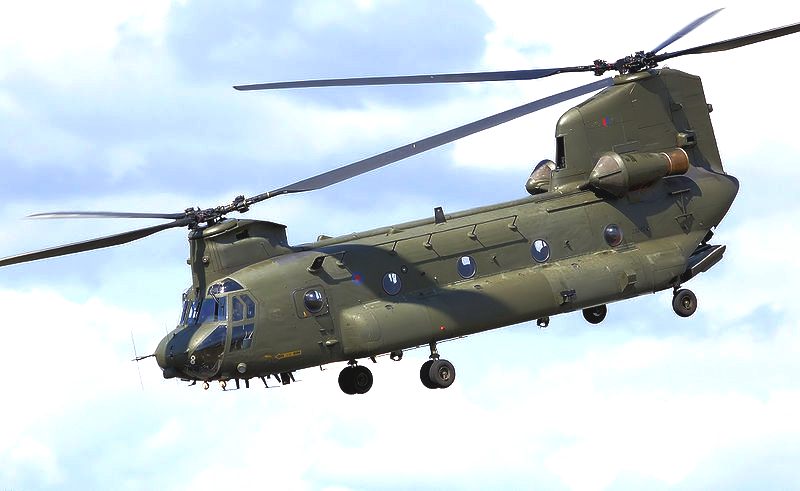
An
RAF Chinook helicopter, troop and equipment transport
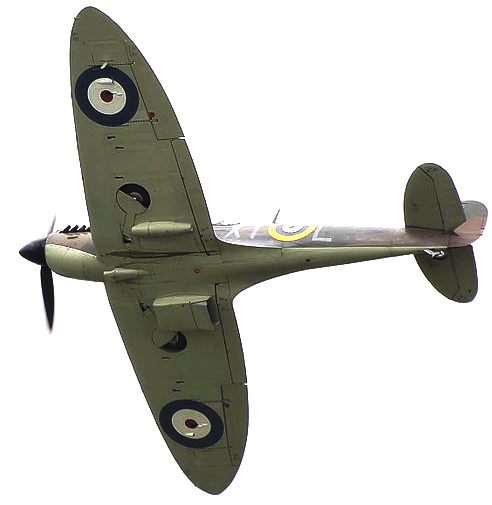
An
RAF Spitfire as used in the Battle of Britain during World War II
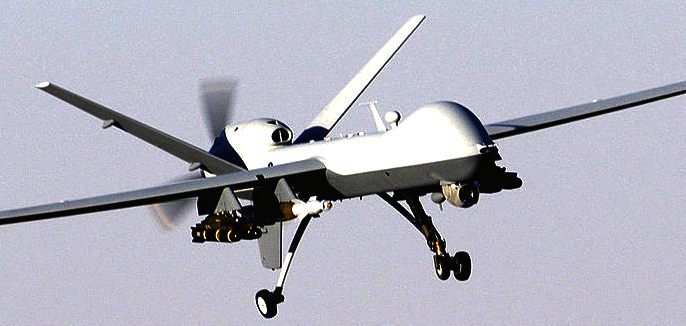
Contact
the RAF
Altitude
RAF
Display Teams
RAF
Events
AH
62 Attack Helicopter
AVIATION
A - Z

Healthier
alternative tastes for adventure capitalists
|

